#goddess brighid
Text
Dedicate a piece of craft to Brigid. It could be origami, crocheted, knitted or even metal work if that is your area of interest. You can even dedicate a recipe that you've created. It could be anything. If it is made with love, it'll please Brigid.
#brigid#brigit#brigid deity#brigid devotion#goddess brigid#goddess brighid#brighid#brigid devotee#brigid worship#mother brigid#mother brigid ❤️❤️❤️#pagan polytheism#celtic paganism#paganism#celtic pantheon#celtic polytheism#celtic goddesses#celtic gods#celtic deities
108 notes
·
View notes
Photo

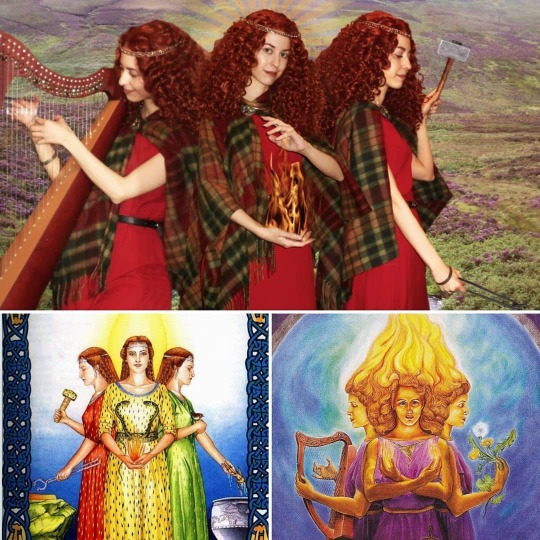


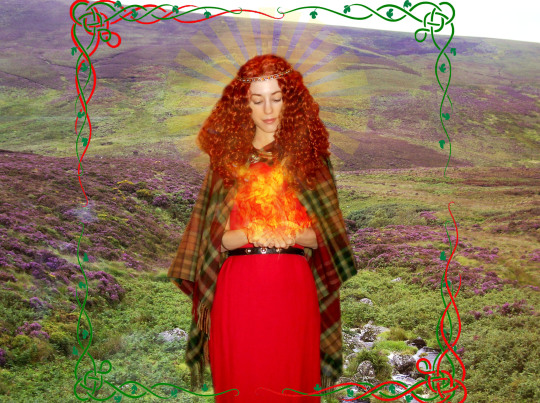




Imbolc 's lá fhéile Bríde shona daoibh! Happy Imbolc (beginning of Spring in the Celtic calendar) and Brigid's Day! 🎶☀️🍃
.
Several edits and a few casual selfies of my 2019 closet cosplay/reenactment of the Irish goddess Brighid, solar fire goddess associated with poetry and inspiration, fertility and healing, smithwork, crafts and music, and warlike protection. She's one of my favourite goddesses in one of my favourite cultures. This new edit focuses on her smithscraft aspect ⚒️
.
My Brigid reenactment posts
DeviantArt
Facebook cosplay page
Cosplay Instagram
#brigid#brighid#brigid reenactment#goddess brigid#imbolc#imbolc brigid#goddess brighid#celtic world#celtic reenactment#celt#celts#ireland#irish myth#irish culture#celtic culture#historical reenactment#historical costuming#irish mythology#wheel of the year#neodruidism#My historical reenactment#brigid's day
34 notes
·
View notes
Text
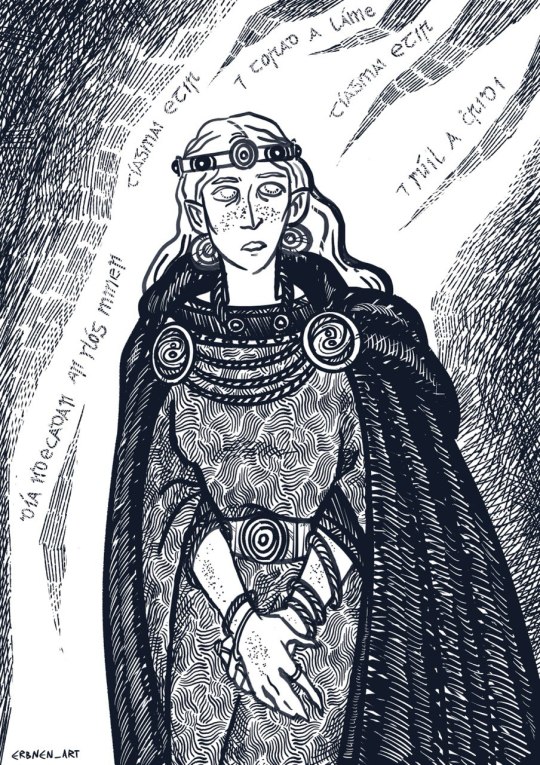
A commission of Brigid for @bloodtreachery (awww, it was SUCH a pleasure to do it!). I put an emphasis on her aspect as a poet, hence the fire of poetry ablaze!
The poem in the flames is a liberal translation of these lines from The Hosting of the Sidhe into Old Irish (courtesy of my wonderful husband):
...if any gaze on our rushing band,
We come between him and the deed of his hand,
We come between him and the hope of his heart.
#artists on tumblr#irish mythology#brighid#brigid#celtic paganism#gaelpol#paganblr#pagan art#illustration#commission#commissions open#tuatha de danann#irish goddesses#goddess brigid#druidism#celtic deities#aodhan morris#my art
335 notes
·
View notes
Text

Painted Brigid because ofc
This is my January monthly postcard if anyone wants one btw! Sign up here before February 6th
#brigid#goddess brigid#celtic mythology#irish mythology#irish myths#celtic polytheism#imbolc#imbolg#spring#artists on tumblr#irish folklore#irish paganism#brighid#goddess#illustration#original illustration
472 notes
·
View notes
Text


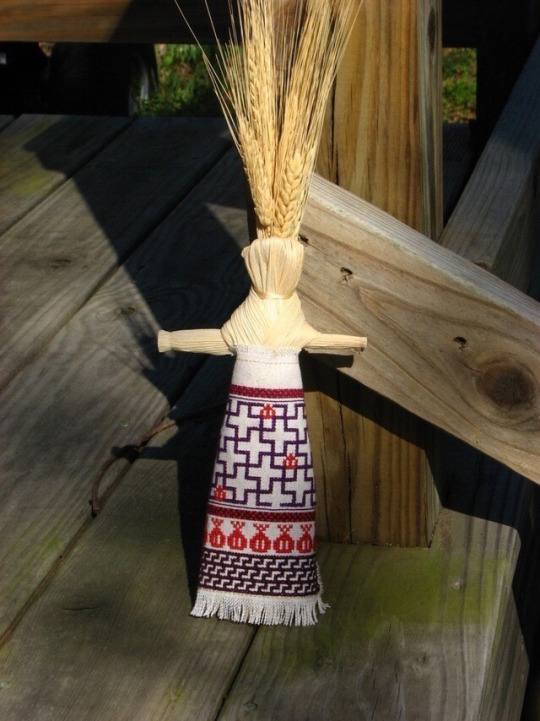


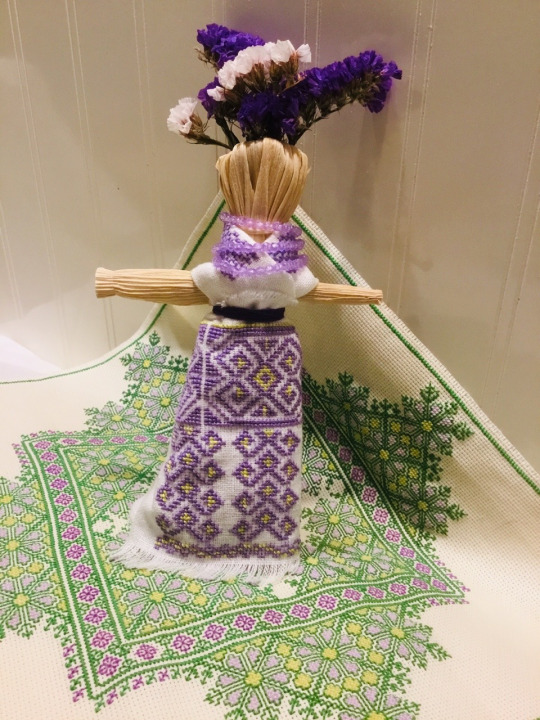


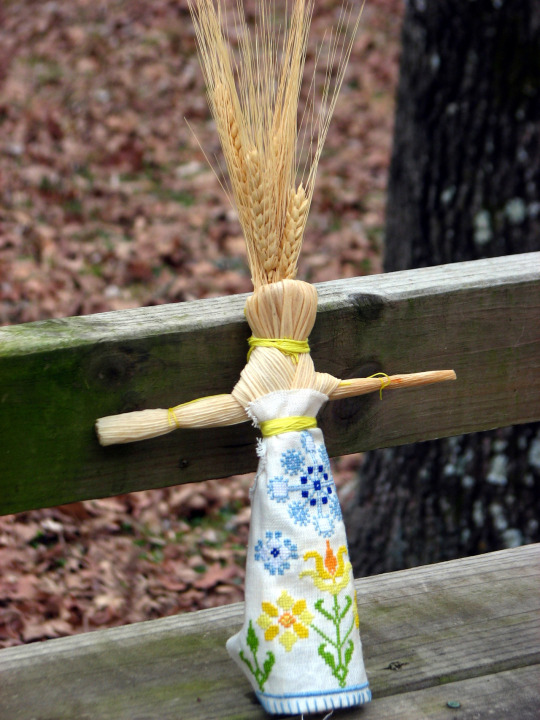
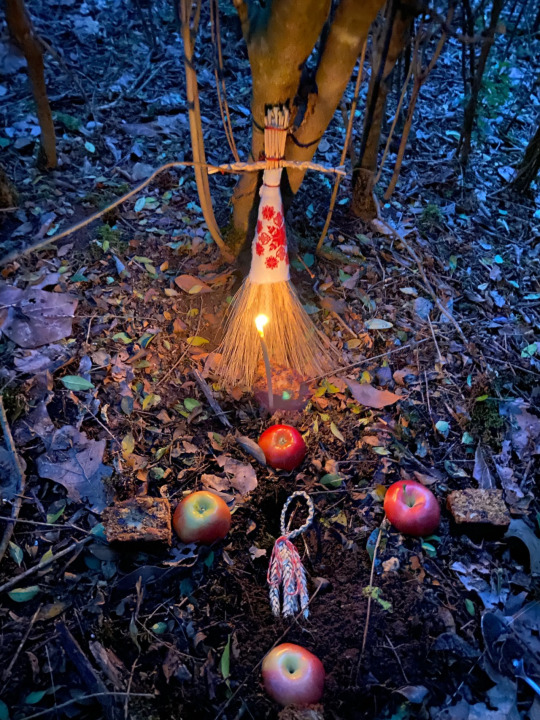
Just a few of my dollies over the years.
#corn husk dolly#corn husk doll#corn dolly#folk embroidery#goddess embroidery#Morana#brighid#Rozhanitsa#Berehynia#Persephone
27 notes
·
View notes
Text
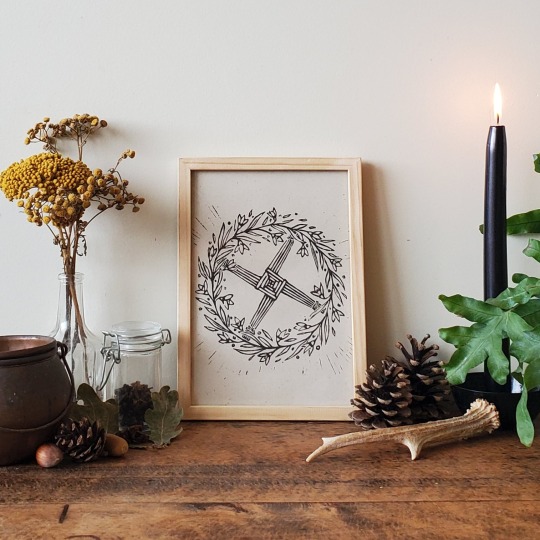
Imbolc is coming and i'm sending à lot of my imbolc crown linocut prints lately !


Packed with love for my fellow pagans❤️
Find my prints here :
https://dragenafernwood.etsy.com
#linocut#linoprint#linogravure#pagan artist#imbolc#paganism#pagan#paganblr#pagan witch#witch art#witchblr#druidry#brighid#goddess brigid
29 notes
·
View notes
Text
Prayer to Brighid
You who breathes innovation,
and ignites that spark within us
You who forges with steel,
as well as with words
You who kindles the fires,
and stokes our passions high
Brighid, Lady of the Amber Forge,
I honour you.
#prayer a day#day 12#deity#brighid#bríde#Brigid#goddess#irish myth#irish mythology#prayer#poem#pagan#paganblr#paganism
38 notes
·
View notes
Text
Gorgeous article on Brighid, Brigit, Bride by Morgan Daimler.
#Brid#Brigid#Brighid#Brigit#Bride#Imbolc#Imbolg#la fheile bride#goddess#saint#spirit#irish#scottish#catholic
7 notes
·
View notes
Text
Lady Brigid of Ireland
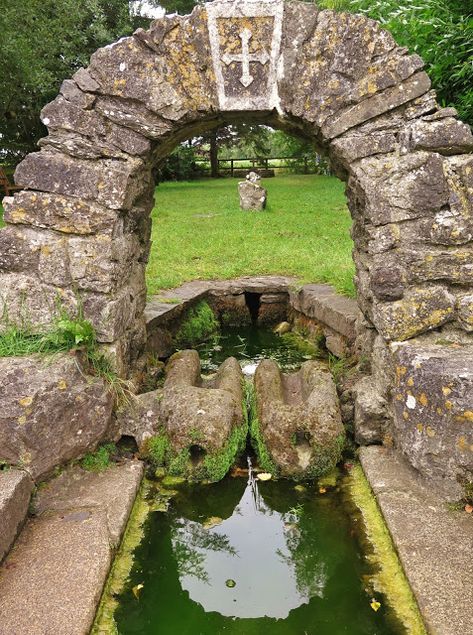
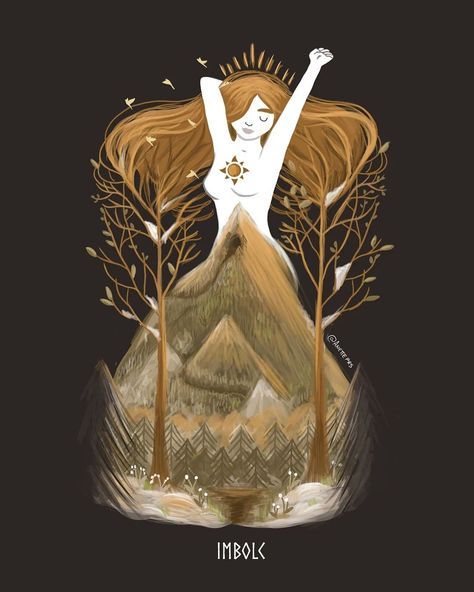
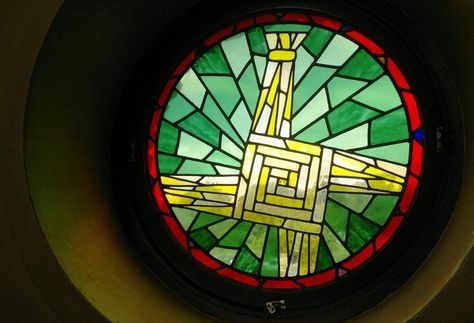


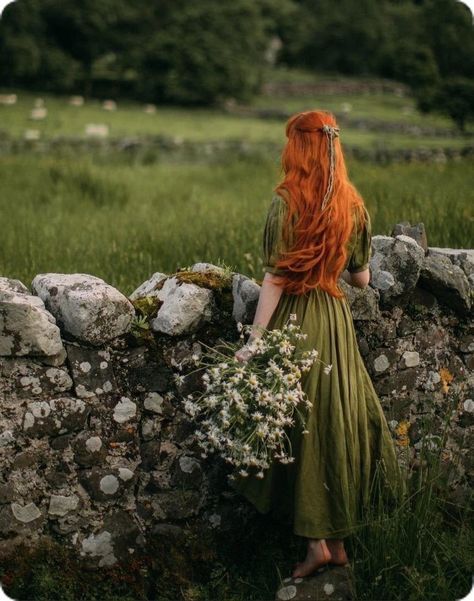



The patroness, mother saint, of Ireland
Requested by @wanderers-inn
Taking requests via asks, and anonymous requests via messages.
#Brighid#Brigid#Brigit#Bríd#Cogitosus#protectors of women#justice goddesses#healing goddesses#Brigid of Ireland#Irish saints#Irish goddesses#Brighidine paganism#digital worship
7 notes
·
View notes
Text
‿︵‿︵୨˚̣̣̣͙୧ - 🔥 - ୨˚̣̣̣͙୧‿︵‿︵
Brigid of Éire
I sing your name in praise
I ask for your light during my life’s new era
From my hearts hearth, may your flame blaze
*+:。.。 go raibh maith agat 。.。:+*

#brigid devotee#devotional blog#I timed this perfectly to sunrise :)#poetry#poem#irish mythology#irish pagan#irish paganism#brigid deity#goddess brigid#saint brigid#brigid#brighid deity#brighid#prayer#pagan prayer#irish polytheism#gaelpol#omnist#hearth witch#fire goddess#goddess#digital offering#Brigid prayer#brigid goddess#tuatha de danann
7 notes
·
View notes
Text

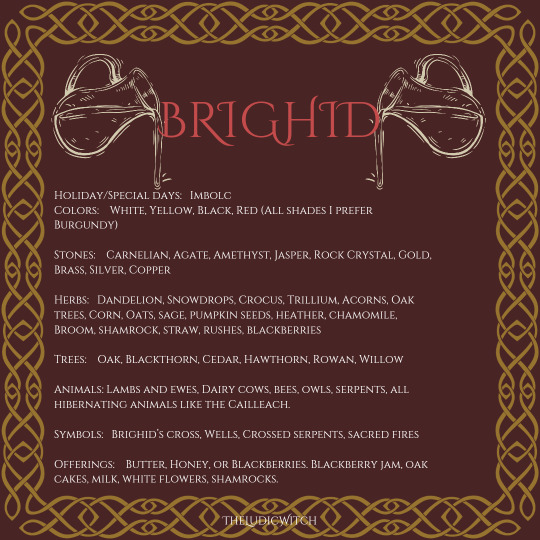
With Imbolc around the Corner here's some quick information on the Goddess.
#witchcraft#witchblr#witch community#witchcore#witch business#pagan blog#pagan business#pagan prayer#pagan#witch art#Canva#celtic goddess#celtic holidays#imbolc#brighid#goddess brigid#pagan wicca#celtic paganism#celtic ancestry#celtic pantheon#celtic magic#celtic#paganism#pagan witchcraft#oimelc#imbolg
7 notes
·
View notes
Text
Grief Blessing
Brighid of Keening,
let me feel the waves of emotions.
comfort me when my heart aches,
join me when recalling happy memories.
Brighid of the Seasons,
sow seeds of hope when I need light,
aid me in growing a bright future,
help me to take stock of the things I harvest,
give me rest when I tire in the darkest of days.
Brighid of Healing, ease my mind and my soul.
Brighid of Smithcraft, strengthen my mind to persevere.
Brighid of Poetry, inspire me to beauty when I may not see it.
As it was,
as it is,
as it shall ever be.
--Ashli Hall
#poetry#devotional poetry#prayers#Brighid#Brigid#Bríd#Brigit#Brighidine paganism#Celtic goddesses#Irish goddesses#Gaelic goddesses#healing#grief#Brighid of Keening#Brighid of the Seasons#Brighid of Healing#Brighid of Smithcraft#Brighid of Poetry
51 notes
·
View notes
Text
CAILLEACH - Queen of Winter
One of the great Celtic ancestors, the Cailleach was the goddess of the cold and the winds. Sometimes known as the Veiled One or the Queen of Winter, the Cailleach determined the winter’s length and harshness. As both divine hag and creator deity, she remains a popular topic for poets and writers.
The Cailleach dwelled in Scotland, Ireland, and the Isle of Man, and many places remain dedicated to her within these regions.
Etymology
Cailleach is a common word in both Scottish and Irish Gaelic meaning “old woman” or “hag.” This current word was derived from Caillech, a term meaning “veiled one” in Old Gaelic. These terms stem from a base root shared with many others that describe women, such as caillin.
Poets have given her different names across time: Digdi (or Digde), Milucra, Biróg (the fairy-woman who saved Lugh of the Long-Arm as an infant), Buí (one of Lugh’s wives), and Burach. Due to many of these being separate characters altogether, some scholars believe that Cailleach was more of a title than a name—any old woman could be called a cailleach.
Her most prominent title was Cailleach Bhéara, revealing her as master of winter. The many regions named for her often gave her unique titles reflective of their respective landscapes. Examples included An Chailleach Bhéara (The Hag of Beara) in County Cork, Ireland, and “the Storm Hag(s)” in Scotland.
Attributes
The Cailleach appears primarily as a veiled old woman, sometimes with only one eye. Her skin was deathly pale or blue, while her teeth were red and her clothes adorned with skulls. She could leap across mountains and ride storms. In the Manx tradition, the Cailleach was a shapeshifter capable of transforming into a giant bird.
The Veiled One was a creator deity that shaped much of the known landscape; whether she did so intentionally remains unclear. Her tools of creation and destruction included her hammer, with which she was able to control storms and thunder. In some legends, she also controlled a well that would occasionally overflow and flood the land.
The Cailleach was neither fully good nor fully evil; her intentions varied from tale to tale. Through her association with storms and thunder, she was a natural and wild destructive force. Despite this, she also cared deeply for animals both wild and domestic during the dark winter months. In all three Gaelic-speaking regions, she was the patron of wolves emboldened by winter hunger; in Scotland, she also served as a deer herder.
The Cailleach was both ageless and immortal; as winter gave way to spring, she would take a drought that returned her to youth. In Manx legend, she spent half the year as a young woman and the other half as a old crone—she was only known as the Cailleach during the latter half. In Ireland, she had seven periods of youth, after which she remained old permanently.
The seasonal division between summer and winter—where the Cailleach ruled winter and Brigid ruled summer—highlighted the association of the two goddesses. On Samhain, or October 31st, the Celtic year ends and winter begins, marking the return of the Cailleach. In Scotland and the Isle of Man, the Cailleach transforms into Brigid during Beltane, a fertility festival held on May 1st.
The Cailleach was also a goddess of grain, a key resource in surviving winter. The last sheath of grain harvested was dedicated to her, and used to begin the next planting season.
Like many Irish goddesses, the Cailleach was linked to sovereignty and rulership. Before anyone could rule the land, they had to first garner her approval.
Sites
One of the Cailleach’s most remarkable attributes was her association with places. The Cailleach was tied to inhospitable locations across the Gaelic-speaking Celtic world. The Cailleach had more ties to local geography than any other Celtic deity.
21 notes
·
View notes
Text
🔥 Brighid 🔥
I've started forming a relationship with Brighid and it's the most wonderful thing. I find her to have a very protective and warm presence. I also find her presence to be very powerful - more than other deities I've worked with - she's able to channel her energy clearly and directly into my core.
I am completely adoring of her. She is a huge inspiration and this has allowed me to become very productive. I've felt compelled to make art, writing, and study in her honour. She is a good guide and helps me feel very motivated and focused.
I'm feeling very safe and happy with her in my life. I look forward to experience how our relationship grows ❤️
8 notes
·
View notes
Photo

Ein gesegnetes Imbolc Bright Imbolc Blessings #imbolc #imbolcblessings #brighid #goddess #triskel #triskele (hier: Solingen-Gräfrath, Nordrhein-Westfalen, Germany) https://www.instagram.com/p/CoH1Xu9KJ_W/?igshid=NGJjMDIxMWI=
11 notes
·
View notes
Text
Brighid and Bee swarms: I will not molest the swarm queen, nor will the swarm queen molest me.
"Carmichael (1928), in his review of Scottish customs attaching to the Feast of Saint Brigit, speaks of what he calls 'a propitiatory hymn' sung to 'a serpent' which 'is supposed to emerge from it's hollow among the hills on St Bride's Day'. Some of the versions of the 'hymn', describe what emerges from a tom, 'the knoll', as rigen ran, 'a noble queen', and, on the basis of my argument hitherto, I take this to be a clear reference not to any serpent, but rather to the queen bee and, therefore, by implication, to Brigit herself.
La Bride nam brig ban
On the day of Bride of the white hills
Thig an rigen ran a tom
The Noble Queen will com from the Knoll,
Cha bhoin mise ris an rigen ran
I will not molest the Noble Queen,
's cha bhoin an rigen ran rium
Nor will the noble queen molest me.
By way of further support for this reading, an emendation of Carmichael's interpretation of a tom as 'the knoll' can easily be made, substituing for 'knoll', 'round heap', 'conical knoll', 'ant-hill', dictionary definitions of tom (Dwelly, 1918), one or all of which readily could be taken as referring to a bee-nest or bee-hive. Likewise, Carmichael's reading of rigen ran as 'noble queen' may also be open to an interpretation other than that offered by him here: the qualifying element ran, taken by Carmichael to be the adjective ran 'noble', constitutes a suitable soubriquet for a royal personage, to be sure, but it is also a word which might easily be confused with ràn meaning, among other things, 'melancholy cry', 'drawling, dissonant roar or cry' (Dwelly, 1918). Needless to say, the idea of a 'noisy' rather than a 'noble' queen slots in well with the tumult which accompanied swarming according to early writers (...)"
—Hearth-prayers and other traditions of Brigit: Celtic goddess and holy woman. Article by Ó Catháin (Séamas) in JRSAI 122 (1992), pp. 12–34.
#brighid#brigit#saint brigit#carmina gadelica#irish polytheism#irish recon#irish reconstructionism#scottish polytheism#scottish reconstructionism#scottish recon#brighid goddess#celtic recon#celtic polytheism#highlands#quotes#st bride#imbolc#imbolg
4 notes
·
View notes